Central Bhutan tour is meant to take visitors to the center of Bhutan. Amusingly the beautiful Bumthang valley and Trongsa the place of deep valleys enriched with great history falls geographically at the center of Bhutan. The tour also includes sightseeing in western districts of Paro, Wangdue, Punakha and Thimphu (capital) as it’s along the east west highway of the nation. The two central districts of Bhutan are entirely different of topography, language and tradition, therefore offering visitors to experience diverse cultures and traditions.
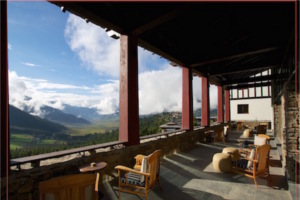
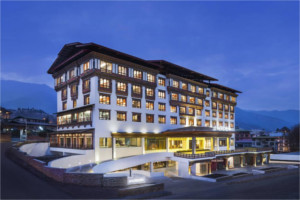
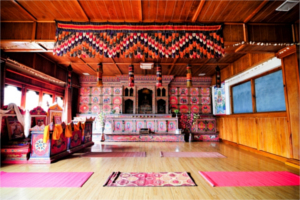
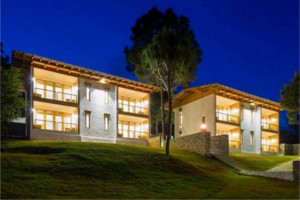
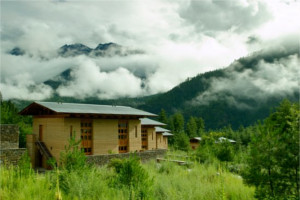
Fly into Paro valley. The fight into Bhutan over the Himalayas is one of the most spectacular experiences. Particularly the flights from Delhi (India) and Kathmandu (Nepal) fly past the majestic Mt.Everest, Kanchenjunga and the entire Himalayan range, visible on the left side of the plane as it glides towards Bhutan. On landing, at Paro, you will be received by our representative. After customs and Immigration formalities, you will be escorted to Thimphu.
Overnight at hotel.
Breakfast
Visit the National Memorial Chorten (Stupa), built in memory of the 3rd King of Bhutan. Visit the Art School and Changangkha Lhakhang (a temple built in 12th century by a Tibetan saint).
Lunch
Visit the National Takin Reserve Center to see Takin, the national animal of Bhutan and Trashichhodzong (fortress of glorious religion). Trashichhodzong in its current form was completed in 1968 and it houses the throne room of His Majesty the King of Bhutan. It is also a center of monastic body and houses main secretariat building. The majestic Dzong located along the Wangchu (Thimphu River) has a Tendrel Thang which is the venue for Thimphu Dromchoe and Thimphu Tsechu, the annual Thimphu Festival where thousands of people fill the courtyard to witness the mask dances, traditional dances, and many more.
Overnight at Thimphu.
Stop at Dochula pass 3100m on route to Punakha from Thimphu. Dochula pass is one of the famous landmarks in Bhutan from which one can sight the Himalayan Range of Bhutan on clear winter days. The place is adorned with Druk Wangyel Chorten, 108 stupas built to honor the 4th king of Bhutan and bring peace to the region. The stupas were built under the patronage of Ashi Dorji Wangmo Wangchuck.
Descend to Punakha Valley (1280m).
Punakha valley served as the capital of Bhutan till 1955 until it was shifted to Thimphu. The Punakha Dzong is still the winter seat of Je Khenpo (Chief Abbot) of the monastic body as the place has a temperate climate with Phochu and Mochu Rivers flowing through the fertile fields of the valley.
Visit Punakha Dzong.
Punakha Dzong or Pungthang Dewa Chenpai Phodrang, the palace of bliss was built in 1937 by Zhabdrung Ngawang Namgyel. The second oldest Dzong of Bhutan is religiously and architecturally significant to Bhutanese as it houses several sacred relics, scriptures, statues and is the place where the first king of Bhutan was crowned in 1907. Punakha Dzong is also famous for Punakha Drupchen where the 17th-century battle scene with Tibetan invaders are recreated and is followed by Punakha Tsechu where grand Thongdrel of Guru Rinpoche is unfurled with costumed mask dances and rituals.
Overnight at Punakha
Visit Khamsum Yulley Namgyel Chorten.
The eminent Monastery which is also referred as Punakha Zangdopelri was built with the sponsorship of her Majesty the Queen Mother Ashi Tshering Yangdon Wangchuck under the guidance of Dilgo Khyentse Rinpoche and Lam Sonam Zangpo to bring peace in the world. The short hike up to the Lhakhang along the paddy fields is one of the most scenic short hikes one can take and the view from the top of the Lhakhang is often described as picturesque, breathtaking and enriching by the visitors.
Visit to the new Temple and nunnery of Sangacholing on way to Talo Village.
Photography: Anytime.
Overnight at Punakha.
After breakfast drive to Gantey via Wangduephodrang.
Visit around Wangdue Valley. Visit local village homestay, which offers good insight into the lifestyle of the Bhutanese people. Arrive at Gantey village, visit Gantey Goemba, the only Nyingmapa monastery in western Bhutan. Phobjikha is a most scenic valley in Bhutan and is often described as picturesque, breathtaking and many more by the visitors.
Overnight at Phobjikha.
Known for its vast valley landscape and winter home for Black-Necked Crane, Phobjikha valley at an altitude of 3000m is one of the most famous tourist destinations in western Bhutan. The vast U shaped valley offers lots of scenic hiking routes and nature trails for the visitors. Overlooking the valley is the Gantey Goemba the oldest Nyingmapa Monastery which dates back to 17th century. The monastery also is the venue for the annual Black-Necked Crane Festival.
Visit the Nature Conservation Centre and learn about the black necked Cranes that fly into this valley from Tibet every winter.
Overnight at Phobjikha.
Early breakfast
Drive to Bumthang which takes about 7 hours via Trongsa. Trongsa and Bumthang are located in central Bhutan which is diverse in culture and has a lot of histories to tell.
Stop for lunch at Trongsa.
Visit mighty Trongsa Dzong, the Dzong is one of the biggest structures of as such standing in ridge surrounded by deep valleys. Visit around Trongsa town.
Drive to Bumthang.
Overnight at the hotel.
Visit Kurjey Temple
The name Kurjey means body print. Guru Padmasambava left his body print on a rock inside the main temple and can be seen to this day. The big cypress tree in the temple is believed to be the walking stick of Guru Rinpoche. The holy water beside the temple is also believed to be creation and blessing from him.
Visit Jambay Lhakhang Temple
This temple is one of the 108 temples built by the Tibetan King Songtsen Goempo in one single day as Paro Kyichu Temple. The temple hosts Guru Jowo Jampa the future Buddha its main statue. One of the most sacred festivals takes place here every year.
Visit Tamshing Lhakhang
The Tamshing Lhundrup Monastery is believed to be of Pemalingpa (1450-1521) the great Treasure Discoverer. The monastery is also on tentative lists of world heritage sites.
Visit Jakar Dzong
This Dzong stands majestically on a ridge overlooking the Bumthang valley. Dzong still has remains of the tunnel network which was used to fetch water during war. It is believed that Lam Ngagi Wangchuk chose the site for the construction of the Dzong in the lower valley of Chokor and while performing a ritual, a white bird is believed to have flown out of the site and landed on the place where the current Jakar Dzong is built. Considering this as an auspicious sign, a small Dzong was built and named Jakar meaning “White Bird”. The Dzong was enlarged to its current size in 1646 by Choegyal Minjur Tempa.
Visit the Handicraft center where one can find numerous arts of the locales.
Overnight at Bumthang.
Visit the Burning Lake
Mebartso which translates to “the burning lake” is at about 5 minute drives from the road point. The lake is named after Terton (treasure discoverer) Pema Lingpa. The treasure discoverer is believed to have gone into the lake with a lit butter lamp and came back with the lamp still burning while he discovered Guru Rinpoche’s hidden treasures, hence the name of the lake.
Visit Tang village and the Tang Nunnery founded by the 9th Gangtey Trulku Rinpoche. According to convenience and time, excursion to beautiful Ura Valley.
Overnight at Bumthang.
Drive back to Wangdue Phodrang which takes around 7 hours’ drive.
Visit around Wangdue valley.
Overnight at Wangdue.
Drive to Thimphu which takes about 3 hours’ drive.
Visit Chimmi Lhakhang, the temple of Lama Drukpa Kuenley (The Devine Mad Man). Chimmi Lhakhang was built in 1499 by Lam Ngawang Chogyel on the spot where Lama Drukpa Kuenley subdued a demon who was fleeing away in form of a dog and buried the demon naming the spot as khe mae (no dog now). Hence the temple was named Temple of no dog (Chimmi Lhakhang).
Overnight at Thimphu.
After breakfast drive to Paro.
Paro Sightseeing:
Visit the National Museum
Located on a ridge overlooking the Rinpung Dzong and the Paro valley is the Ta Dzong, built as a watch tower of the Dzong below. Unlike the rectangular shape of the Dzong, Ta Dzong is conical, more like that of a European caster. It was converted to Museum in 1967.
Paro Rinpung Dzong
This Dzong is known as the fortress of the heap of Jewels. Built in 1646 by Zhabdrung Ngawang Namgyel, the Dzong is historically rich is pride of Paro locales. The approach to the Dzong is through a traditional cantilever bridge.
Drukgyel Dzong
Visit the Dzong with a delightful village nestling at its foot. Built in 1646 by Zhabdrung Ngawang Namgyal to commemorate his victory over the Tibetan invasions, Drukgyel means the Victorious land of the Thunder Dragon. The Dzong caught fire in 1951 and remained as ruin until recently to commemorate birth of Gyalsey the Prince the Dzong is undergoing reconstruction to bring to its former glory.
Overnight at Paro.
Hike up to Paro Taktsang the imposing Tiger’s Nest. The monastery is perched on the cliff side above 900m from the valley. Guru Padmasambhava is believed to have flown up on this site on a Tigress’s back and meditated here for few months and then in 7th century brought Buddhism in the valley down below.
Overnight at Paro.
daily tariff:USD 250 Per person per night
surcharges:
Solo Traveller: USD 40 per night
Dual Traveller: USD 30 per person per night
Three travellers and above: surcharges not applicable
Visa fees: One time payment of USD 40 per person.
daily tariff:USD 200 Per person per night
surcharges:
Solo Traveller: USD 40 per night
Dual Traveller: USD 30 per person per night
Three travellers and above: surcharges not applicable
Visa fees: One time payment of USD 40 per person.
A minimum of 3 star accommodation (4 & 5 star may require an additional premium).
All meals
A licensed Bhutanese tour guide for the extent of your stay
All internal transport (excluding internal flights)
Camping equipment and haulage for trekking tours